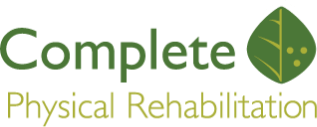If you’ve been experiencing back pain, it just may be a herniated disc. A herniated disc can put extra pressure on the muscles and nerves around the spinal column. Symptoms may include, pain on one side of the body, pain that radiates to the arms or legs, aching, burning sensations in the affected area and pain with certain movements.
What is a Herniated Disc?
The spinal column is comprised of a series of bones. “The cervical spine has seven bones, the lumbar spine has five bones and the thoracic spine has 12.” Each disc has a gelatinous inner section and a tough outer ring. When the disc protrudes through the outer ring, it is known as a herniated disc. This can cause numbness, pain and discomfort.
There are a number of factors that can cause a herniated disc. Certain motions like turning or twisting can cause a herniated disc. Lifting heavy objects is another culprit. Being overweight can cause a herniated disc, too. This is because the discs have to support more weight. Older people are at risk for a herniated disc. As we age, the discs begin to lose some of their protective water content. This causes the disc to slip more easily out of place.
“Studies have indicated that genetic factors influence many, if not most of the diseases commonly encountered in clinical practice by physical therapists, such as herniated disc. Genetics has been shown to play a role in end-plate herniations at 40-49 years of age.”
The Benefits of Physical Therapy for a Herniated Disc
Physical therapy plays a critical role in recovering from a herniated disc. A physical therapist implements different techniques for pain relief and healing. Passive treatments like deep tissue massage, electric stimulation and hot and cold therapy are a few examples of passive treatments. Deep tissue massage uses pressure to relieve spasms and deep muscle tension due to a herniated disc. Hot therapy increases blood flow to the affected area and enhances healing. Cold therapy reduces inflammation. Electric nerve stimulation reduces muscle spasm by sending a tiny electric current to the nerve pathway.
Active treatments by a physical therapist address joint movement, stability, flexibility, strength and posture. A physical therapist will teach you core stabilizing exercises to strengthen the back muscles. You’ll also engage in body muscle exercises to strengthen and condition your body. In addition, a physical therapist will teach you flexibility techniques and proper stretching techniques.
If you have back pain, turn to physical therapy for help. Our physical therapists at Complete Physical Rehab will do a comprehensive exam and review your medical history to determine if you have a herniated disc. Once a proper diagnosis is made, a physical therapist will then create and implement a personalized treatment plan targeted to the affected area. The goal of physical therapy is to help you attain an active and pain-free life. It’s helped thousands of others and can help you, too. Contact Complete Physical Rehab today and get on the road to recovery from a herniated disc with physical therapy.

